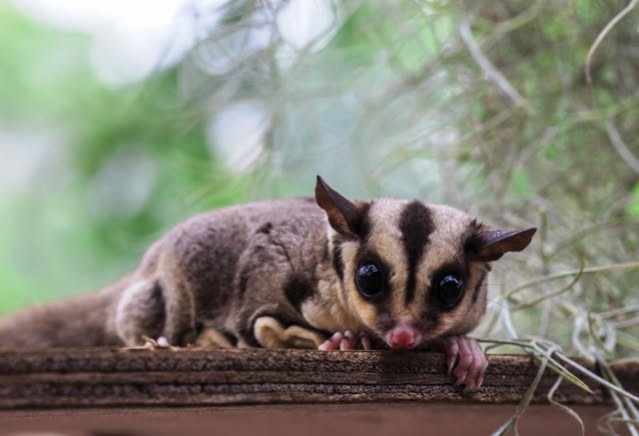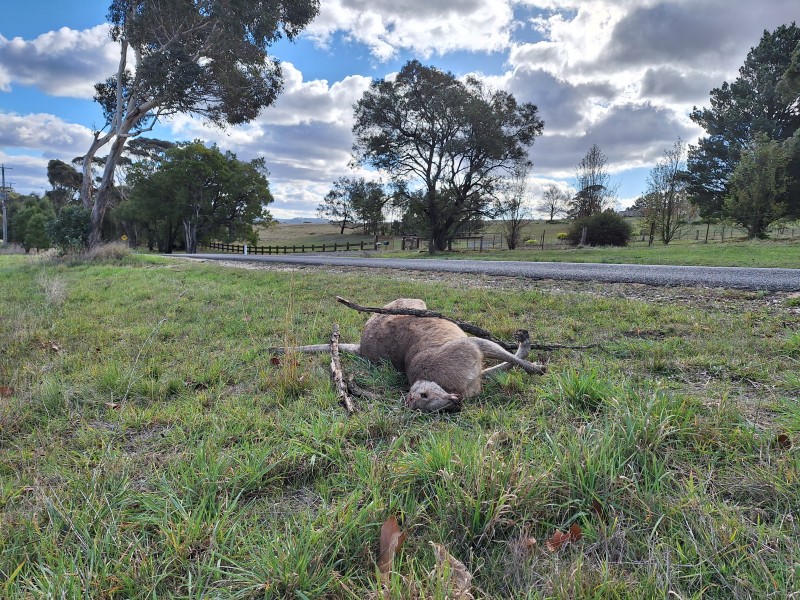
Joanna Beard
It’s a crisp, June morning on the outskirts of Gisborne.
Stolen glances of Mount Macedon and the comforting smell of woodsmoke are among the wintry delights here. But there’s something that distracts from the beauty.
It’s the dead animals splayed along the roadside.
Two eastern grey kangaroos, one ringtail possum, one crimson rosella and one magpie.
There’s a body on almost every road. Twisted and flattened.
This isn’t an unusual sight. The shire has the highest rate of animal road strike in Victoria.
Rates of animal rescue in the Macedon Ranges are 200 per cent higher than the second highest shire in the state, according to Macedon Ranges Shire Council’s 2024 Reducing the Wildlife Road Toll Community Forum.
Animal Justice Party MP for Northern Victoria, Georgie Purcell, says she sees the carnage every day during her commute to her Woodend office.
“I can’t tell you how many times I’ve stopped on Black Forest Road myself to do a pouch check,” Ms Purcell says.
“It’s absolutely traumatic and confronting. Particularly in spring, you’ll see a deceased or injured native animal every couple of hundred metres.”
Ms Purcell is currently chairing a parliamentary inquiry into wildlife roadstrike in Victoria. She says the inquiry will investigate whether planning legislation adequately protects native animals. It will also look at the contributions of wildlife carers.
“In my opinion, what [wildlife carers] do is essentially an emergency service but it’s not recognised as such, like the CFA or the SES,” Ms Purcell says.
One of these carers is Lynda Pope, president of the Macedon Ranges Wildlife Network.
She says wildlife carers, most of whom are volunteers, spend “huge amounts” of personal funds on animal rescue and rehabilitation.
“You’re using your money and your time to try and support the wildlife, you don’t get a lot of appreciation or recognition for doing that. We do it because to our mind, it’s necessary to help these animals,” she says.
Ms Pope believes increased housing developments could be a cause of the high levels of animal road trauma in the shire.
“The animals get pushed out of the area being developed. There’s nowhere for them to go but on the roads. They get hit by cars, and wildlife people then need to come along and help,” she says.
Ian Slattery, a wildlife rescuer from central Victoria, says while the recent drought is pushing animals like kangaroos onto our roads, habitat destruction is still the “major factor” behind animal roadstrike.
“The recent lack of rain is creating more roadkill, as kangaroos have lost their food source, so are coming closer to the roads to find food and water,” Mr Slattery says.
“But habitat destruction, through things like housing developments, is what’s causing the increase in roadstrikes.”
“Some people think kangaroos have had a population explosion, but this is an absolute myth. It’s just that we’re seeing more of them close to our towns and houses because we’re destroying their habitat elsewhere,” he says.
In a statement, Dominic Testoni, director of assets and operations at Macedon Ranges Shire Council, accepts there’s a connection between increased developments and wildlife road strikes.
“We acknowledge the link between development, increased traffic, and wildlife trauma, and we are working to address this through both planning controls and road safety initiatives,” he says.
“We’re involved in several initiatives specifically focused on reducing wildlife trauma on roads.
“Council believes developers also have a role to play in mitigating these impacts.”
When asked about the link between housing developments and roadkill, a spokesperson from Willow, a housing estate in Gisborne, says “open space and ecological integration” is a priority in their design.
“Willow’s masterplan respects the site’s natural features, promoting this through a series of walking and cycling paths, parklands, wetlands, and green spaces.”
“Willow has been planned and designed in line with Macedon Ranges guidelines and planning frameworks that inform development.”
Development is a contentious issue in the Macedon Ranges. But despite varying opinions about it, it’s an undoubtable reality.
A recently updated state government target proposes 13,200 new houses are to be built in the Macedon Ranges by 2051. Councils have been told they’ll be penalised and stripped of planning powers if they fail to comply with the targets set for them.
The Macedon Ranges Shire Council projects that between the years of 2021 and 2046, the shire’s total population will increase by 23,723 people.
So how do we balance the needs of our growing population with the needs of our local wildlife?
Research fellow and urban ecologist from RMIT, Jacinta Humphrey, says there are many solutions available to councils and developers, but they need to be budgeted in at the beginning of a project.
“For possums and sugar gliders, there are rope bridges you can put up above the road. For ground dwelling animals, you can put in underpasses to divert them away from traffic,” Ms Humphrey says.
“These solutions can be expensive, but it’s definitely possible if [councils and developers] build in these costs from the get go,” she says.
Our region faces a balancing act between expansion and conservation. So if the Macedon Ranges is at the forefront of the problem of animal roadstrike, could we also be at the forefront of the solution?
– Go to @jojottings on Substack if you’d like to read the extended article.








